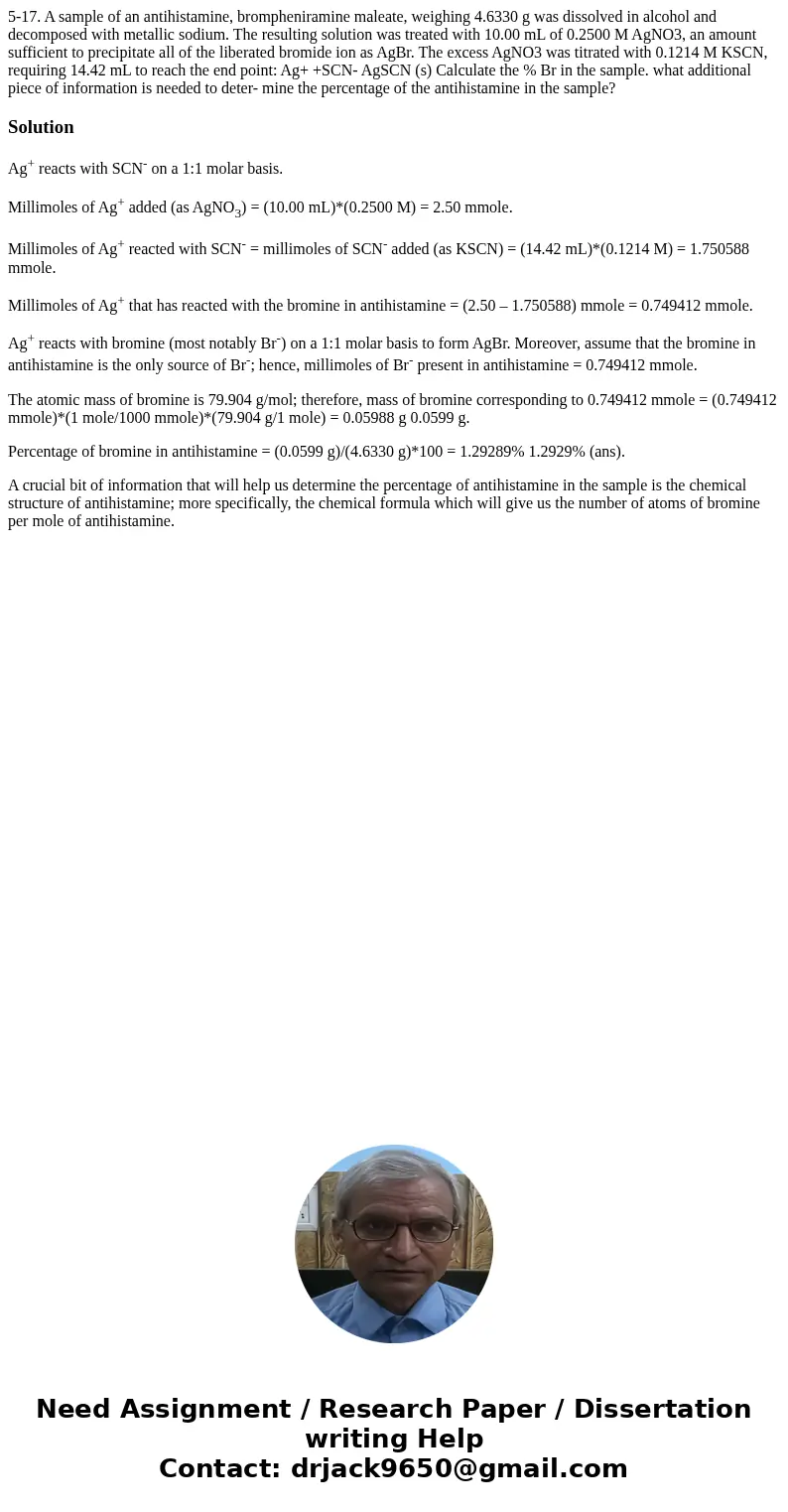517 A sample of an antihistamine brompheniramine maleate wei
Solution
Ag+ reacts with SCN- on a 1:1 molar basis.
Millimoles of Ag+ added (as AgNO3) = (10.00 mL)*(0.2500 M) = 2.50 mmole.
Millimoles of Ag+ reacted with SCN- = millimoles of SCN- added (as KSCN) = (14.42 mL)*(0.1214 M) = 1.750588 mmole.
Millimoles of Ag+ that has reacted with the bromine in antihistamine = (2.50 – 1.750588) mmole = 0.749412 mmole.
Ag+ reacts with bromine (most notably Br-) on a 1:1 molar basis to form AgBr. Moreover, assume that the bromine in antihistamine is the only source of Br-; hence, millimoles of Br- present in antihistamine = 0.749412 mmole.
The atomic mass of bromine is 79.904 g/mol; therefore, mass of bromine corresponding to 0.749412 mmole = (0.749412 mmole)*(1 mole/1000 mmole)*(79.904 g/1 mole) = 0.05988 g 0.0599 g.
Percentage of bromine in antihistamine = (0.0599 g)/(4.6330 g)*100 = 1.29289% 1.2929% (ans).
A crucial bit of information that will help us determine the percentage of antihistamine in the sample is the chemical structure of antihistamine; more specifically, the chemical formula which will give us the number of atoms of bromine per mole of antihistamine.

 Homework Sourse
Homework Sourse